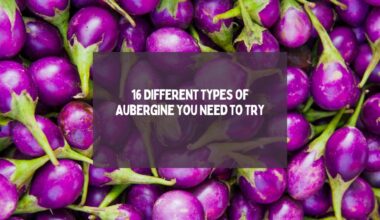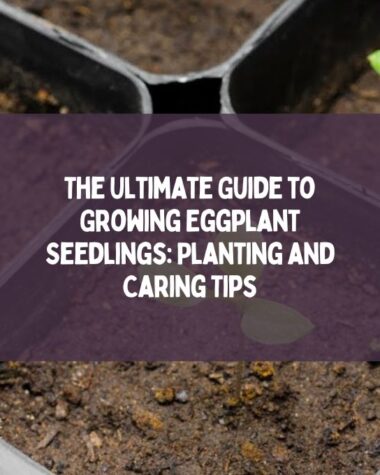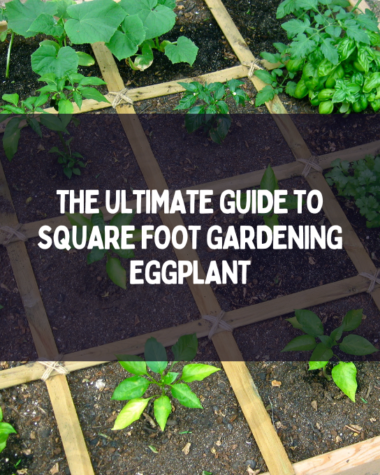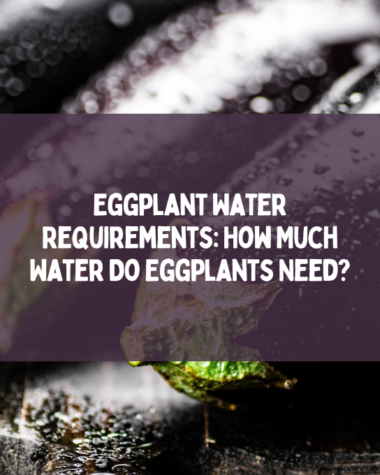Eggplant vertical gardening is a great solution for those who want to grow eggplants without taking up a lot of space. It’s a creative way of growing eggplant vertically, using trellises, wall-mounted planters, or any other type of vertical structure.
As an expert eggplant planter, I’m excited to share with you a space-saving solution for growing eggplants – vertical gardening. Eggplants are versatile and nutritious vegetables that can be used in a variety of dishes. But they can also take up a lot of space in a traditional garden.
By using vertical gardening techniques, you can get the most out of your growing space and have a lot of tasty eggplants to eat. In this guide, I’ll share my tips and tricks for successfully growing eggplants vertically, from choosing the right varieties to creating the perfect growing conditions.
Let’s get started!
Is it Possible to Grow Eggplant/Aubergine Through Vertical Gardening?
Vertical gardening is an innovative and efficient way to make use of limited space when growing vegetables. Eggplants, or aubergines, are one type of vegetable that can easily be grown using vertical planting.
Vertically planted vegetables like eggplants require special containers such as hanging baskets, wall planters, or trellis systems that allow the plant to grow vertically up and out rather than spreading horizontally across a flat surface.
Vertically planting aubergine provides several advantages compared to traditional flat-bed gardens. Here are some of them.
- With vertical gardening, you can save space and maximize yield in small areas.
- It’s also possible to grow several plants in a single area since they are stacked rather than spread out.
- Moreover, it makes harvesting easier since the plants are all at the same height.
- Lastly, vertical gardens also look great and can add aesthetic value to a home or garden.
Main Requirements For Eggplant Vertical Gardening
Easy Eggplant Vertical gardening is a great way to reap the benefits of this space-saving growing method.
- The most important part of growing eggplants or aubergines vertically is choosing the right container.
- Hanging baskets or trellises can work well for this type of gardening and provide ample space for the plants to thrive.
- Additionally, appropriate soil and fertilizer must also be selected to ensure optimal growth conditions.
With the right setup, anyone can enjoy the benefits of vertical gardening with eggplants. It’s an easy way to maximize the use of limited space while producing a healthy harvest of vegetables.
10 Simple Steps for Eggplant Vertical Gardening Success: How to Do it Effectively?
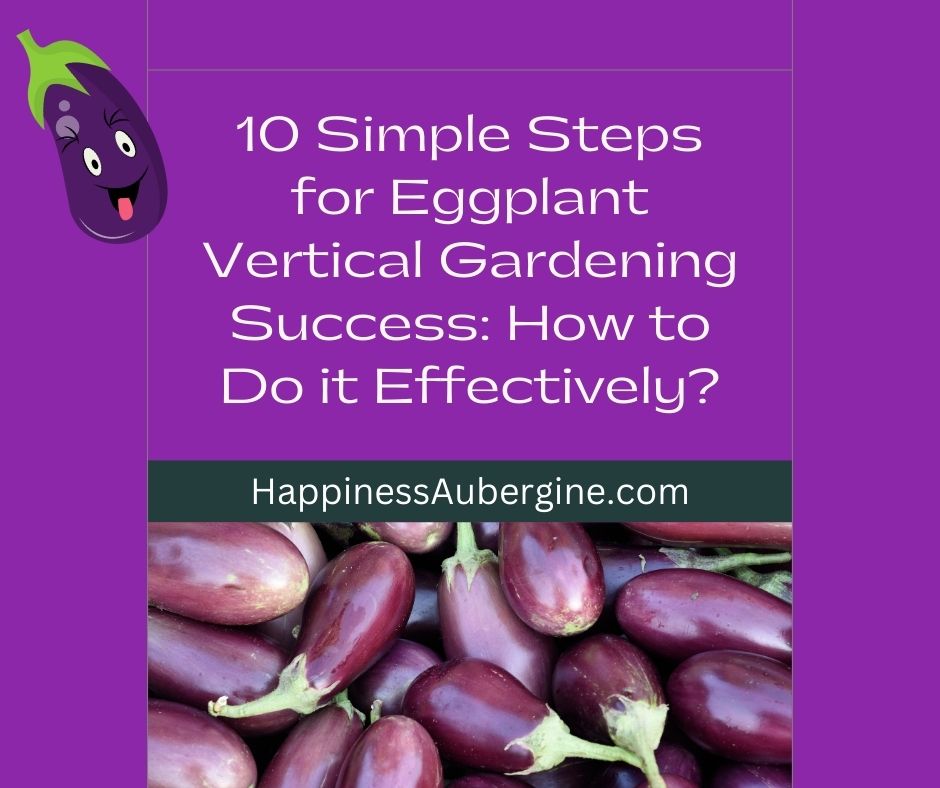
Eggplant vertical gardening is a great way to save space while growing your favorite vegetables. It is a simple and creative way of planting aubergines, or eggplants, in a vertical form. This method of vertical planting can provide a larger harvest than traditional gardening.
With a few materials and the right strategy, you can easily create an eggplant hanging basket for your home garden. In this section, I’ll discuss the 10 steps for successful eggplant vertical gardening and give you some tips for making sure your plants thrive.
Step 1: Gather materials
When it comes to vertical gardening, eggplants can be the perfect choice for saving space. To begin your aubergine vertical gardening journey, you will need to first gather the necessary materials.
You’ll need a hanging basket or planter specifically designed for vertically planting vegetables, as well as potting soil and some eggplants or seedlings. Additionally, it may be helpful to have some plant ties and a trellis or support structure to help secure the eggplant hanging basket.
With all of these items in place, you are ready to get started on your vertical planting aubergine adventure!
Step 2: Choose a container
When it comes to eggplant vertical gardening, the best type of container is one that’s tall and made from plastic or a hardy material like terracotta. The container should have enough space for the roots of the eggplant as well as sufficient drainage holes.
You may want to use a hanging basket or wall planter, but make sure it can hold the weight of the soil and plant when fully grown. For best results, look for containers with a larger diameter and depth.
Step 3: Drill a hole
To begin your eggplant vertical gardening project, you will need to drill a hole in the container. This hole should be big enough for the eggplant transplant. Make sure the hole is slightly bigger than the eggplant root ball.
For example, if the root ball is 3 inches, drill a hole that is about 4 inches wide. When finished, insert the transplant into the hole and secure it with soil.
Read More:
- 16 Different Types of Aubergine You Need to Try
- Complete Aubergine Planting Guide: Tips and Strategies for Successful Cultivation
Step 4: Insert the transplant
The next thing to do when planting eggplant in a vertical garden is to put the transplant in the container. Make sure to remove any excess soil from the roots of the plant. Place the seedling in the hole and lightly press down on the soil surrounding it to ensure a secure hold.
Ensure the top of the stem is level with the top of the container so that the eggplant has enough room to grow.
Step 5: Add a barrier
Before adding the soil, it is important to add a barrier to the container. This barrier will help keep soil from leaking out when watering the plants. It can be made from netting, plastic sheeting, or a fabric liner.
Make sure the material is large enough to cover the hole and extend down the sides of the container. Secure the barrier in place with tape or staples. Also, make sure to trim off any excess material that might hang over the edges of the container.
Step 6: Fill with soil
Now it’s time to fill the container with soil.
- Use a quality potting mix that is specifically formulated for growing vegetables.
- The soil should be moist, light, and airy.
- Fill the container just below the transplant so that when you water it, it will soak up the moisture without running out.
Make sure to press down the soil lightly so that it is securely in place.
Step 7: Add a cover (optional)
Putting a cover on your vertical eggplant garden is not necessary, but it can help keep the moisture in and keep your eggplants from getting sick.
You can use a plastic sheet, garden cloth, or another type of material that is light enough to allow sun and air to penetrate through. Make sure to secure it with pegs or stakes and ensure that it’s not so tight that it restricts air circulation.
Step 8: Hang in a sunny location
Once your eggplant vertical garden is constructed, you will need to find a place to hang it. It should be in a spot that receives a lot of sun throughout the day. If possible, try to find a spot that is also protected from wind and rain.
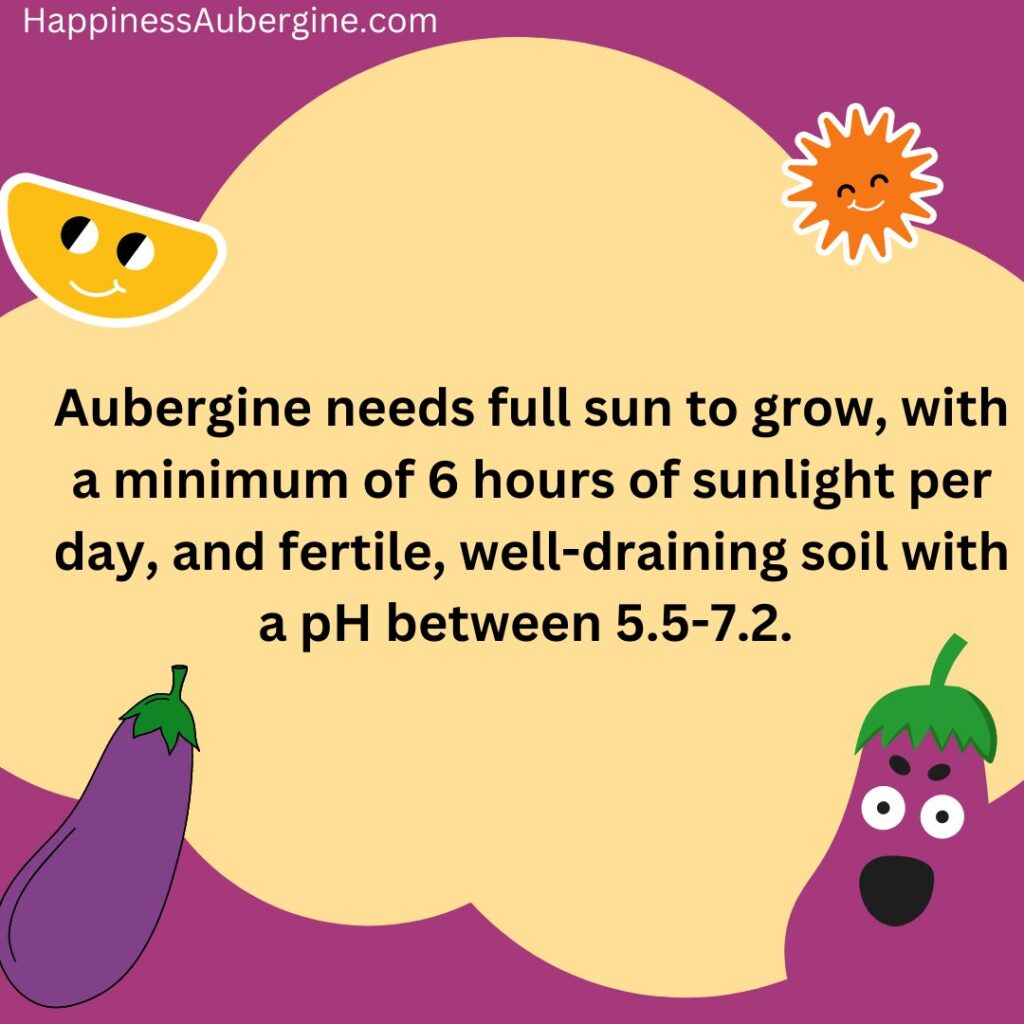
Make sure the container is securely attached to whatever structure you’re hanging it from. Once your eggplant vertical garden is secure, it’s time to start growing!
Step 9: Water and fertilize
To get a good harvest of aubergines, you need to water and feed your eggplant vertical garden on a regular basis. Water plants at least twice a week to prevent wilting and fertilize once a month using a high-nitrogen fertilizer.
Make sure not to over-fertilize as it can harm your plants and reduce yields. Additionally, be sure to water the plants early in the day so that the leaves have time to dry before nightfall.
Step 10: Grow other plants (optional)
Vertical gardening is a great way to make the most of a small space and even combine different kinds of plants to make a colorful, aesthetically pleasing display. Eggplant can be paired with other vegetables such as tomatoes, peppers, herbs, or even flowers.
Make sure the plants you choose have similar water and soil needs. Planting companions like marigolds or chives can also help to repel pests. Experiment with different combinations and enjoy your successful vertical garden!
Related Reading:
- How To Grow Pumpkins – A Step-by-step Guide
- When to Transplant Zucchini Seedlings? Let’s find out
- How to Grow Cucumbers Upside Down?
Eggplant Vertical Gardening Tips
Growing aubergines vertically requires proper planning and execution to ensure healthy and fruitful plants. Here are some tips and techniques to help you grow eggplants vertically in your garden.
- Choose a container with adequate drainage. Eggplant plants need to be well-drained to thrive. So make sure the container you choose has enough holes for the water to flow out.
- Drill a hole in the bottom of your container for excess water to escape. Eggplant is especially prone to root rot. So make sure the container you use has enough holes for water to drain out.
- Add a barrier, such as landscape fabric or pebbles, around the base of the eggplant seedling before planting it. This will help keep the soil moist and protect the roots from potential diseases or pests.
- Use soil that is rich in organic matter. Eggplants prefer soil that is high in nitrogen and phosphorus content, so make sure your soil is well-fertilized before planting.
- Add a cover or shade cloth over your eggplant plants to protect them from direct sunlight and high temperatures. Eggplants are susceptible to sunburn and can become wilted in extreme heat.
- Hang your eggplant vertical garden in a sunny location away from wind and rain. Make sure the area is well-ventilated but not too exposed to direct sunlight.
- Water and fertilize your eggplant plants regularly to ensure they get the nutrients they need for healthy growth. You can use a liquid fertilizer every two weeks or add a slow-release fertilizer once per month.
Whether you are a seasoned gardener or a beginner, these tips will help you achieve a successful harvest of fresh and delicious eggplants.
Conclusion
Vertical eggplant gardening is a great way to make the most of your space and grow tasty eggplants or aubergines. It requires a bit of effort, but with a few simple steps that I’ve mentioned above, you can create an efficient and productive vertical garden.
